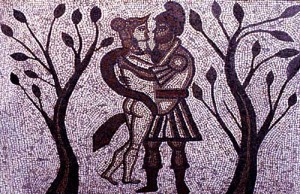Henry PURCELL: Dido and Aeneas / John Eccles: Music to Macbeth
In 17th century London, Dido and Aeneas was not considered an opera, but a “mask” – a series of scenes, some of them with outlandish characters (known as the “anti-mask”). It was probably first performed as a Court entertainment for King Charles II around 1682/3, and so our interpretation is based more on practices there rather than those relevant to the subsequent famous performance at a boarding school for girls in 1689.
To complete the evening, we give also the “Witches’ Music to Macbeth” composed by John Eccles for a performance of Shakespeare’s play in 1697.
Concert version with gesture.
Variable forces: 5 solo singers, 8 singers for the chorus and small roles, 7–14 instruments according to space and circumstances, direction
Henry PURCELL: The Fairy Queen
The most extravagant theatrical production of its time, given in a concert version with gesture.
9 solo singers, 14 instruments (strings, wind, trumpets, continuo), direction
HANDEL: Acis and Galatea
Acis and Galatea is a “pastoral” based on a story from Ovid’s Metamorphoses, composed by Handel for the Duke of Chandos in 1718. We give Handel’s original version, with just five soloists and small orchestra.
5 singers, 12 instruments (strings, wind and continue), direction
John ECCLES : Semele
The first setting of William Congreve’s text (later set by Handel) is not merely a historical curiosity, but a work full of charm and energy. John Eccles, Master of Queen Anne’s Music, composed it in 1707. Never performed in its lifetime, it is acknowledged as the first real opera in the English language.
12 singers including 3 large rôles, 20 instruments (strings, wind and continue), direction
HANDEL: Acis and Galatea
Acis and Galatea is a “pastoral” based on a story from Ovid’s Metamorphoses, composed by Handel for the Duke of Chandos in 1718. We give Handel’s original version, with just five soloists and small orchestra.
5 singers, 12 instruments (strings, wind and continue), direction
Marc-Antoine CHARPENTIER: Music for Le Malade Imaginaire
All of Charpentier’s charming and imaginative music for Molière’s farce, in a concert version with gesture: Ouverture / Eglogue / Petit opéra impromptu / Three Intermèdes
10 singers, 12 instruments, direction
Sébastien de BROSSARD: “Prologue sur la Prise de Mons” ou Les Géants Foudroyés
This celebratory “Grand Motet” was written in 1691 to mark the (very temporary !) defeat of the League of Augsburg before the town of Mons by an army commanded by King Louis XIV in person. As befits a royal triumph, the programme is completed by the famous Te Deum by Marc-Antoine CHARPENTIER
13 singers, 18 instruments, direction
HÄNDEL: Serenata - Parnasso in festa
10 soloists, (including 6 large rôles), 17 instruments, direction
By theme By size Secular music Music for the stage

